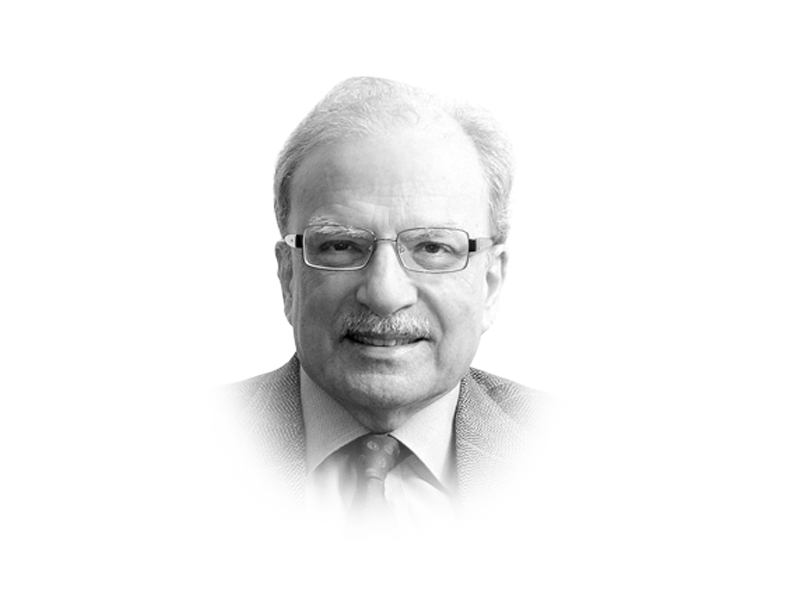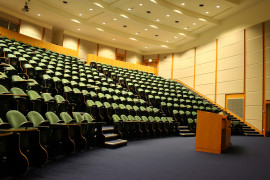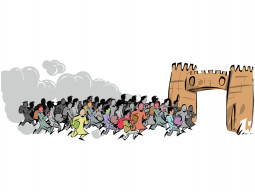
While developing an approach to address the problem of extremism, it is important to find its roots. Some form of extremism in Pakistan can be traced to the country’s formative years. That is certainly the case with violence in Karachi and the rise of extremism in the country’s tribal belt in the north and northwest. Sectarianism, the third form of extremist behaviour, has different roots. It is the consequence of the disputes that arose in the early history of Islam but have been exacerbated by some recent developments in the Arab world. The first two forms were the result of a series of mass movements of people. For designing a comprehensive strategy for combating extremism and terrorism, it would be useful to explore why Pakistan went in that direction. Today, I will look at how the mass migration of people in 1947, followed by significant movements of other people into the city, turned Karachi into a violent place. Once this is understood, it will be realised that the use of force will not solve the city’s problems.
Although India and Pakistan were hewed out of the same political block, the two countries started very differently. The former inherited a functioning government. It not only had a capital that was staffed by an experienced and well trained bureaucracy, but also a working system of government. It had a currency of its own and a central bank to manage it. India also came into existence with a political party with a much wider agenda than the one followed by the party that fought for the creation of Pakistan. Pakistan had to create a government and a political system from scratch.
Pakistan may have been able to create an institutional base for good governance in a decade or so had the first generation of leaders not been distracted by the need to deal with the mass movement of people that accompanied Partition. Within a period of a few months, 14 million people crossed the hastily drawn line of partition in the province of Punjab. According to the historian Stanley Wolpert in his book Shameful Flight, such a large displacement of people would not have occurred had the British been less clumsy and more prudent in the way they departed from India, once considered the ‘crown jewel’ of their large empire. Consequently, Pakistan was left with a problem that had no precedence in human history.
Eight million refugees from India were added to the population of what was then West Pakistan and is now Pakistan. The country then had a population of 30 million of whom three million lived in urban areas. The size of the population was reduced to 24 million after the flight of six million Sikhs and Hindus who went to India, but increased to 32 million with the arrival of eight million Muslim refugees from across the border. In 1951, when Pakistan took its first census, one out of every four of its citizens was a refugee. The refugees arrived in two large streams. About six million moved from the eastern part of Punjab to the province’s western part that was now part of Pakistan. About two million headed towards Karachi, chosen as Pakistan’s capital. This group had little affinity with Pakistan’s indigenous population. That said, it was its unhappiness with the prospect of a Hindu majority rule after the departure of the British that put it in the front of the political movement for the creation of Pakistan. It is a great paradox of Pakistan’s history that the country was created in the provinces that had shown little enthusiasm for the ‘idea of Pakistan’. Being in majority, the residents of these provinces were confident that they would be able to survive in a Hindu-dominated country that would result once the British had left the subcontinent.
The refugees from the Muslim minority provinces were more urban, educated and in possession of the skills required by a government in a newly independent state. It is, therefore, not surprising that in Pakistan’s formative years, the political and economic systems were dominated by the Karachi-based refugee community. The indigenous population was initially marginalised. But that could not continue once those from the areas that were now in Pakistan reasserted themselves. This they did when Ayub Khan came to power as a part of what I have described in one of my earlier works as the “process of indigenisatioin”. This process left the refugees — the muhajir community — aggrieved. It fought back by creating a political organisation to fight for its interests. This was the reason for the creation of the MQM, which became a political force in Karachi and other cities of southern Sindh.
Another set of migrants arrived in Karachi in the 1950s when the city was being built to accommodate the new capital and the process of industrialisation had begun. These fresh arrivals were mostly from the country’s northern areas — north Punjab, Khyber-Pakhtunkhawa and Azad Kashmir. The third wave came from the tribal belt after the 1979 invasion of Afghanistan by the Soviet Union.
Migration, in other words, produced a population mix that could not be handled by the available institutional structure. The result was a roller coaster political and economic ride, which has not ended even after the country has been in existence for almost seven decades.
Published in The Express Tribune, December 16th, 2013.
Like Opinion & Editorial on Facebook, follow @ETOpEd on Twitter to receive all updates on all our daily pieces.
COMMENTS (1)
Comments are moderated and generally will be posted if they are on-topic and not abusive.
For more information, please see our Comments FAQ

































































certainly extremism has become a multihydal problem and bleeding our country profoundely. it is the need of the hour that we inorder to deal with this menace must understand its root causes. this piece of writing on this issue is certainly laudable. great job shaid javed